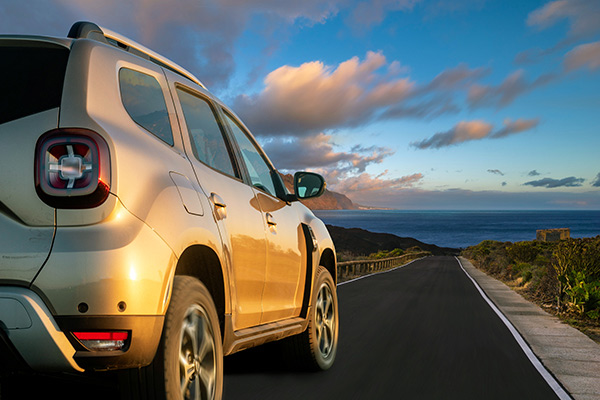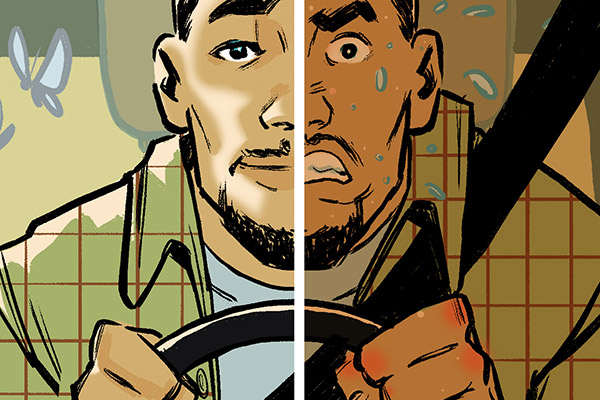The holiday season is a wonderful time to hit the road for a visit with family and friends. But it often means long drives in heavy traffic. To help you stay safe (and sane) on the road to your destination, here’s a list of defensive driving tips to prepare you for the drive.
Planning: The First Line of Defense
According to the National Safety Council (NSC), defensive driving means taking reasonable action to prevent a collision. But defensive driving starts before you even get on the road. Checking weather and road conditions in advance helps you plan a route and know what to expect along the way. It’s also important to pack the car with basic supplies. A first aid kit, flares, snacks and blankets ensure you’re ready for emergencies on long drives.
Traffic Watch
The holiday season is not only one of the busiest travel times, but this year’s low gas prices mean many people will probably choose to drive. And more cars on the road means a higher chance of fatal crashes, so it’s extra important to stay alert this year and learn to spot and avoid hazards using these NSC-approved tips.
– Defensive driving instructors recommend checking your mirrors every three to five seconds and continuously scanning ahead for possible dangers.
– Always give the right of way to fellow motorists, but be prepared to react to unexpected lane changes and turns.
– During heavy traffic, keep a safe distance from other vehicles and give yourself ample response time by slowing your speed.
– Look for signs of impaired, distracted and even aggressive driving and develop techniques like deep breathing to keep calm under pressure.
Collision-Proof Your Drive
 The NSC has identified six unsafe driving behaviors that most often lead to collisions. By understanding each infraction and learning how to avoid them, holiday travelers can develop safer driving habits and collision avoidance techniques.
The NSC has identified six unsafe driving behaviors that most often lead to collisions. By understanding each infraction and learning how to avoid them, holiday travelers can develop safer driving habits and collision avoidance techniques.
1) Improper speed. Keep a close eye on both the posted speed limit and weather conditions. Even if you’re obeying the limit, you may need to slow down to drive safely on a wet or icy road.
2) Violating right of way. To make sure you’re yielding properly and following all traffic signals and stop signs, drive at an appropriate speed to give yourself time to react and take a moment to scan intersections before entering them.
3) Driving left of center. Patience and foresight are key to avoiding this unsafe behavior. Slow down and stay behind cyclists or pedestrians until it’s safe to pass them, and watch the road ahead for animals or other obstacles so you can brake or safely steer around them instead of swerving into the other lane.
4) Turning improperly. Always use turn signals to let other drivers, pedestrians and cyclists know where you’re going. (Most traffic laws require you to signal within 100 feet of a turn, but you should check local regulations.)
5) Passing improperly. When passing, be sure to use your turn signals and check your blind spots, as well as in front of and behind your vehicle. You should be able to pass without getting too close to the car ahead or going over the speed limit; if you can’t, it may not be safe to pass.
6) Following too closely. At low speeds, this can lead to irritating fender benders; at high speeds, it can be deadly. Give yourself at least three seconds of distance between your own vehicle and the one ahead. If someone is tailgating you, don’t speed up! Maintain your speed and move over to let him or her pass if and when it is safe to do so.
Did you know? GEICO policyholders who complete defensive driver training could qualify for discounts on their auto insurance, depending on the state they live in. To learn more about defensive driver courses in your state, visit geico.com/ddc.
By Katherine Palbom & Kristen Koch









Jae Vonne says,
Good info, thanks!
ANNETTE Harris says,
Amen
Michael filore says,
Thanks for the tips. Speed. Turn signals.
willie grant says,
I love the ad vices they are wonderful
Flem de Graffenried says,
Thank you for the great safe and defensive driving concepts * * *
Gregory says,
AGKLM. Aim high in steering, get the big picture, leave yourself an out, make sure they see you, The Smith system saves lives since 1952.
Ronald E Dashner says,
I have taken the Defensive Driving Course. How often am I to take it again?
Enid Sheppard-Middleton says,
This information was very helpful. Thank you.
Ed Kelly says,
Good pointers but I always utilize all of them and then some Listen I have about 2 yrs left on my defensive driving certificate discount I’m 65 how often do I have to take this test to qualify for discount I’m hoping somewhere if you have a good driving record there’s no need for testing I haven’t had an accident since being with Geico that’s about 12-15 yrs There was 1 claim in that time when another Geico person hit me in rear about 9-10 yrs ago Please get back to me with answer Thank You
Mukesh says,
Thanks for advice i keep in mind always its real thuth life is only one time she’s never come back please enjoy each and every second god bless you.
Johnny d israel says,
Loved this email. Reaffirms things we have learned and reminds us of those actions we need to take to ensure safe driving.
Hector L Santiago says,
Defensive Driving Information should be read, it only takes Five Minutes . It could save your life and others.
Doug&Carmen Yamakawa says,
Thank you for the good advice and safety tips reminding me to drive safely
Glenn Reid says,
As a general rule, when your windshield wipers are in use, you should be using your headlights. This helps ensure that not only can you see better in rainy weather other drivers are more likely to see you. This is the law in California but may not be so in other jurisdictions. Even in good weather it is good practice to use your headlights for the same reason.
Jeff Maher says,
Great. And drivers have to remember that the lights on their own vehicles are for others and not for them. A drivers own headlights are only good for them in dim to dark situations.
LIGHTS ON AT ALL TIMES AND IN ALL WEATHER BECAUSE THERE IS A MORE OF A CHANCE YOU WILL BE SEEN.
Caroline vasquez says,
Very good advice
Stephen Boardman says,
Great advice. Thank you for sharing and making mindful of these issues when we are driving.
Steve
Napoleon cadalzo and isela rodriguez says,
Very important